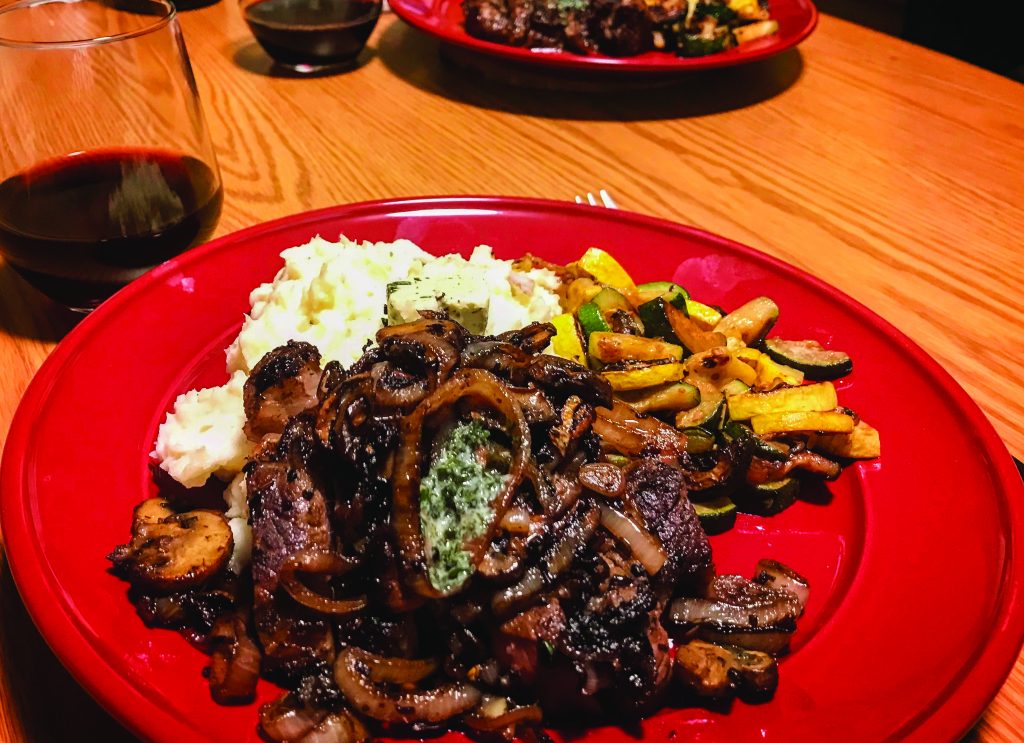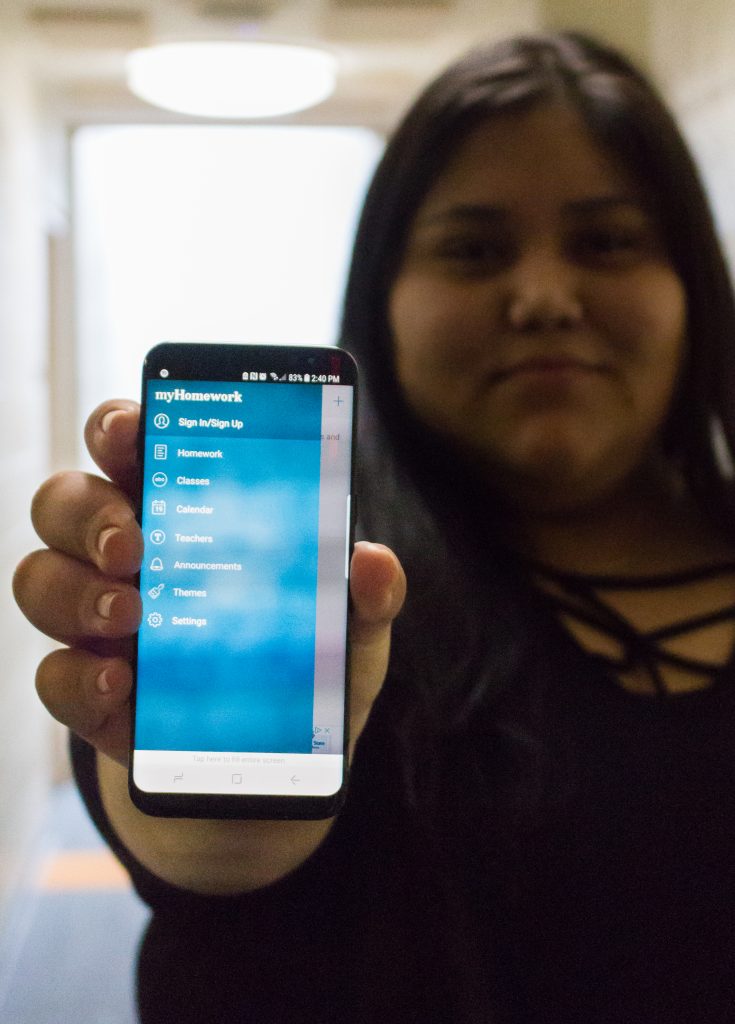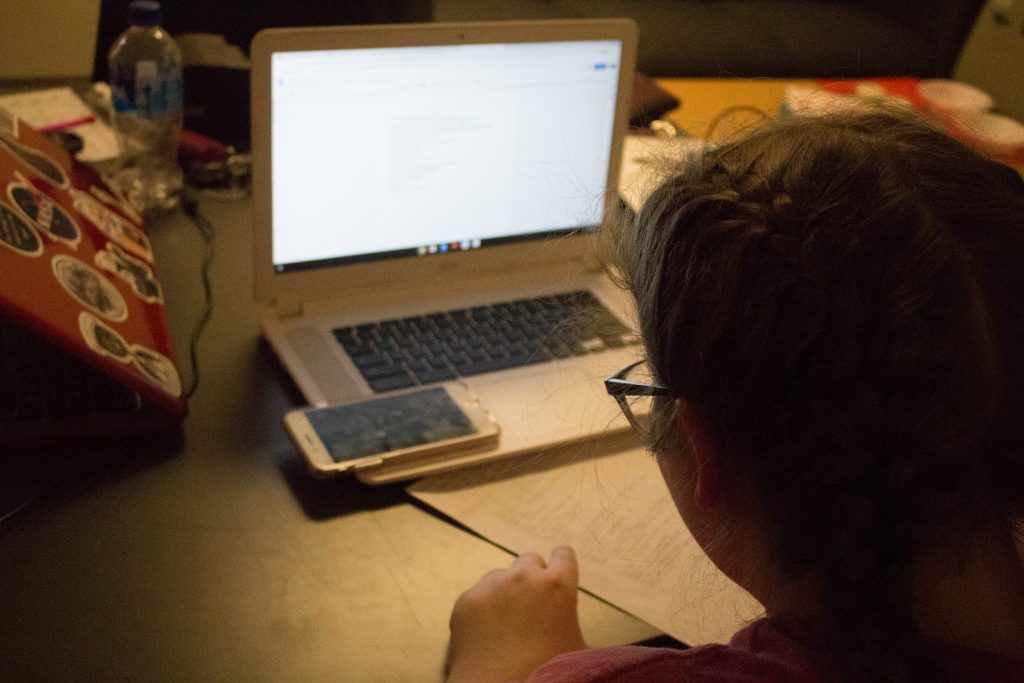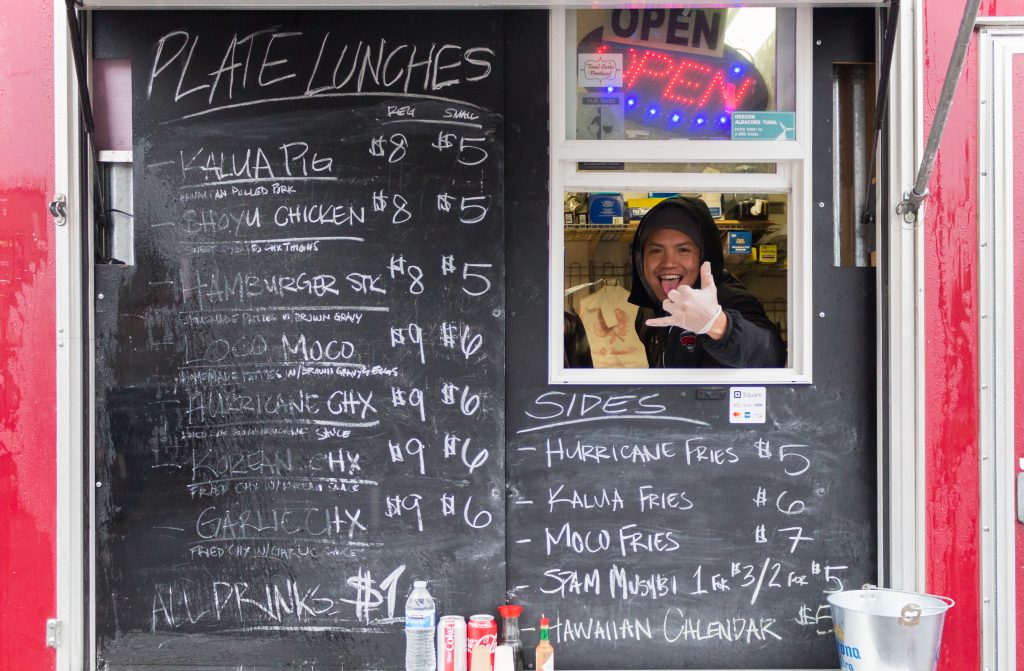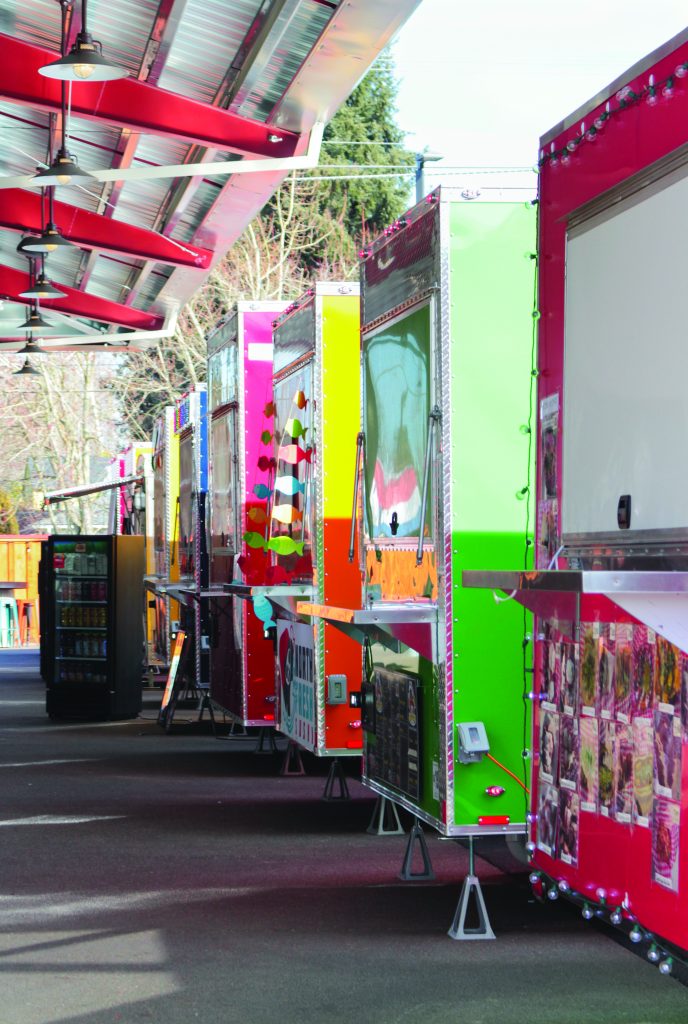
Rebecca Meyers | Lifestyle Editor
Ever wonder what happened to the Bobablastic truck which once sat on Main Street? I found out this week when I visited Salem’s new dining spot, The Yard. Named as such because the main food options are located outside of the building in the form of different food trucks. The Yard is a rustic, laid-back location with a wide range of options.
Inside the main building is the main seating area, a cafe and a small 21+ area which includes a bar. On either side of the building are glass walls that showcase the wide range of food available including: funnel cakes, pizza, Greek food and of course, the red bubble tea truck.
Deciding to try some of The Yard’s options, my friends and I got food from three different trucks. From the first, we got a slab of pepperoni pizza, which was big enough to be cut into three slices. Not only was it layered with enough cheese to cover the pepperoni slices, convincing me for a moment that they had actually messed up my order, but the flatbread-style crust is a gluten-free option. The vendor informed me that most people can’t tell this about the pizza, but lovers of thin crust pizza will enjoy this option.
From the creatively named Bite Me Foods, which sells the type of classics one might find at a county fair, such as hot dogs and corndogs, we got a dessert. “The lovers”, as it’s called, is a waffle topped with whipped cream, rich chocolate sauce and strawberries. The waffle itself also tasted very fresh, and it was a tasty follow-up to lunch.
Additionally, as if to showcase the variety at The Yard, my friend ordered from North Fresh Sushi, which I left too soon to try, but from what I heard it was also a hit.
Though the main part of The Yard is the new-looking, tastefully lit inside, the small backyard also has a firepit and a few outdoor games. Though the weather is not always ideal at the moment, I can see this being a great spot for summer evenings.
Though at first I was skeptical that a hodgepodge collection of food trucks would be a place I’d like to go for dinner or brunch, The Yard had me pleasantly surprised. The atmosphere in the actual building is laid back and warm, and it also has just about everything one could ask for. I would recommend The Yard anytime, but especially once we start to get warmer weather.
Contact the author at howllifestyle@wou.edu
Photo courtesy of Rebecca Meyers



